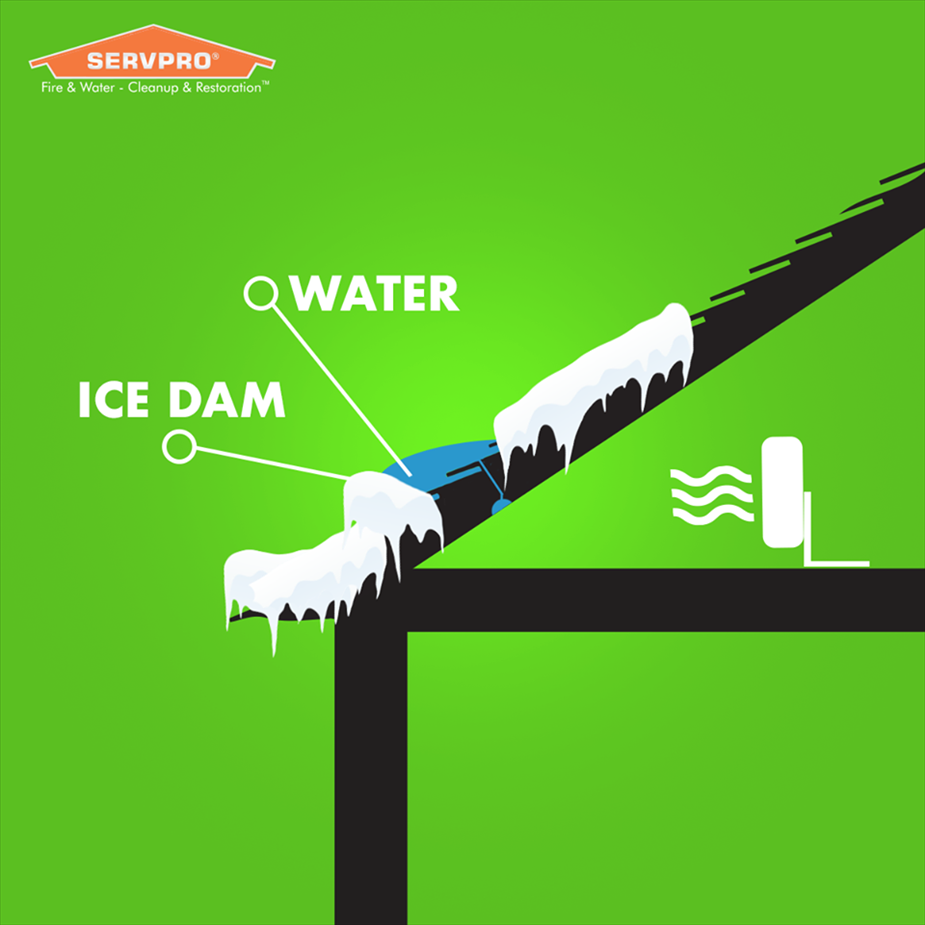Handling Ice Dams After a Winter Storm
12/18/2019 (Permalink)
 This is an infographic illustration of an ice damn to help illustrate what one looks like in a cross sectional view.
This is an infographic illustration of an ice damn to help illustrate what one looks like in a cross sectional view.
Since Wichita has just had it first big snow of the year we thought it would be prudent to share some information about a somewhat common cause of water damage for buildings during this time of the year: Ice Dams! In this post we will discuss what they are, how they form, how they can do damage to your home or business and what you should do to stop them. To answer the most pressing question in this matter no, ice dams are not caused by ice beavers.
Ice dams occur on slopped roofs when snow melts from the heated structure it is sitting on and flows down toward the eaves of the roof which do not have that heated structure beneath it. The newly thawed water hits still frozen snow or ice and refreezes. This process continues and accumulates in size until you have standing water on your roof that is being pushed up between and under you shingles and into your attic or exterior walls. Suddenly you have a water intrusion in your home.
In order to identify an ice dam on your roof keep an eye out for several things. The first thing is snow on your roof. Gotta have snow for it to melt of course. Next you want to look closely at the exterior of your home and at the icicles forming there. Make sure those icicles are just at your gutters or the eaves of your roof and do not go further up. Remember ice dams are the accumulation of water and ice so when examining your roof look for where that could happen and ice that looks like it is on its way to forming that way. Look at the valleys in your roof as it is common for them to form there. Openings in the roof for pipes and vents or really any irregular areas in your roof are good spots to look for possible ice damns.
Knocking down problematic looking icicles is a good first step as that will can stop an ice dam from forming. Many sources caution against using a roof rake because unless you remove all the snow on your roof it could just lead to an ice dam forming higher up on your roof so keep that in mind. The most common solution we have seen from experts is to fill a sock or stocking up with ice melt product like calcium chloride (not rock salt or sodium chloride) and place that stocking vertically over the ice dam so that a path for the water to flow through opens up.
As always be careful in icy conditions and make sure not to slip and fall. If you are worried that any excess moisture got into your home from an ice dam or something else give us a call at 316-684-6700.





 24/7 Emergency Service
24/7 Emergency Service